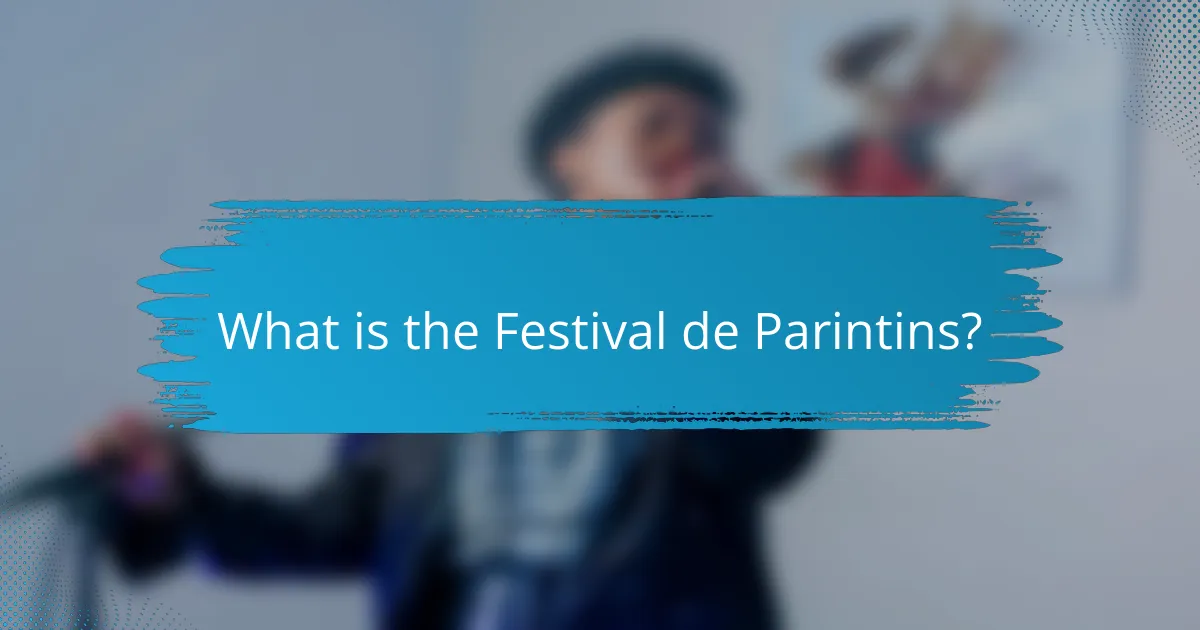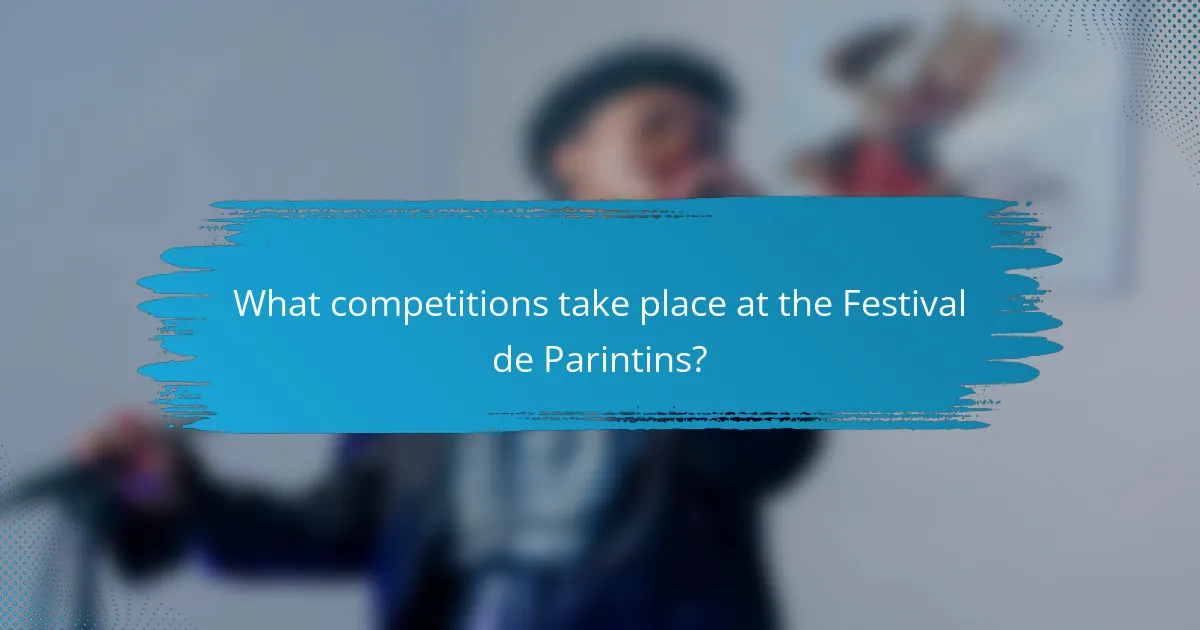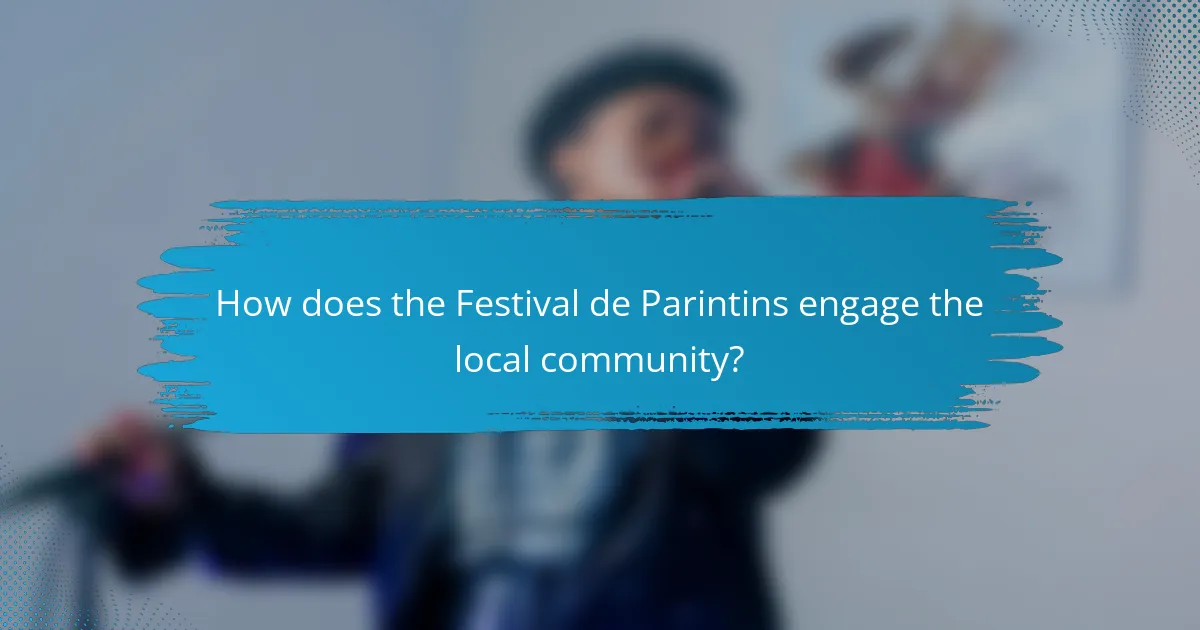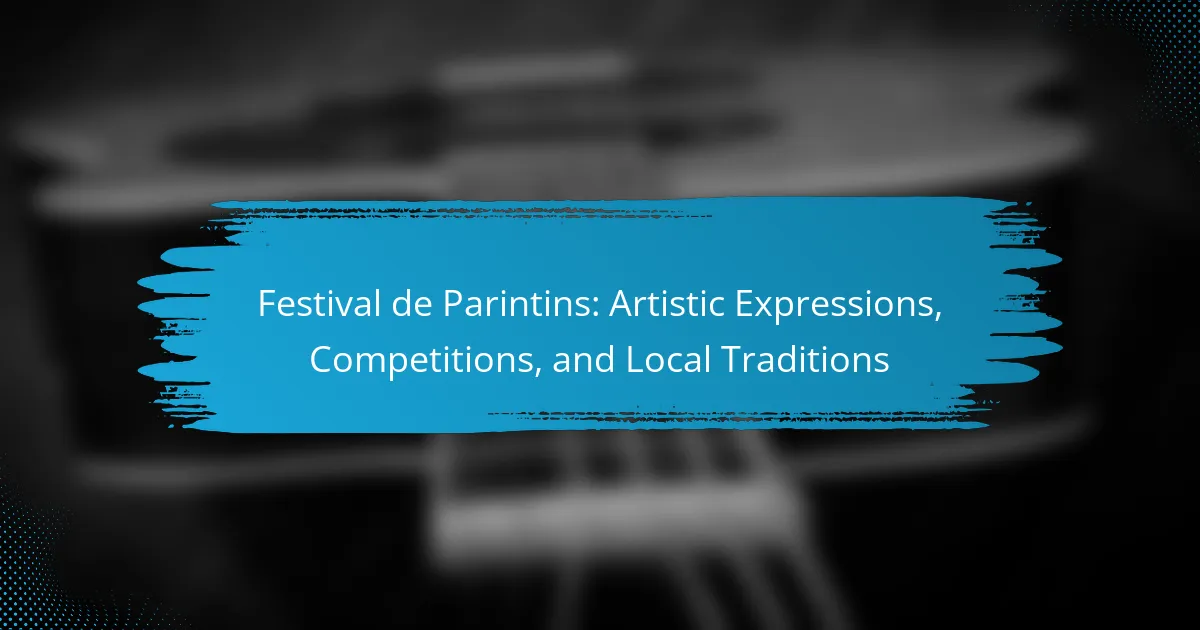The Festival de Parintins is a traditional Brazilian celebration held annually in June in Parintins, Amazonas, featuring a cultural competition between two folkloric groups, Boi Garantido (red team) and Boi Caprichoso (blue team). This vibrant festival showcases elaborate parades, music, and dance performances that highlight the rich cultural heritage of the Amazon region. The event includes three main competitions, culminating in the crowning of an overall champion based on artistic presentation and audience engagement. The Festival de Parintins not only promotes local traditions and folklore but also fosters community involvement and stimulates the local economy through increased tourism and commerce.

What is the Festival de Parintins?
The Festival de Parintins is a traditional Brazilian festival celebrated in Parintins, Amazonas. It occurs annually in June and showcases a cultural competition between two folkloric groups: Garantido and Caprichoso. Each group represents different aspects of Amazonian culture and folklore. The festival features colorful parades, music, and dance performances. It attracts thousands of visitors every year. The event has roots dating back to the 1960s. The festival is recognized for its vibrant artistic expressions and community involvement. It promotes local traditions and strengthens cultural identity in the region.
How did the Festival de Parintins originate?
The Festival de Parintins originated in the 1960s in Parintins, Brazil. It was initially a celebration of local folklore and culture. The festival features a competition between two main groups, Garantido and Caprichoso. These groups represent different cultural narratives and artistic expressions. The event is rooted in the legend of the Boi-Bumbá, a traditional Amazonian tale. Over the years, it has grown into a major cultural and tourist event. The festival showcases music, dance, and elaborate costumes. It attracts thousands of visitors annually, highlighting the region’s rich traditions.
What historical events led to the establishment of the festival?
The Festival de Parintins was established in 1965. It originated from local folklore traditions in the Amazon region. The festival celebrates the legends of the Boi Bumbá. This tradition dates back to the 19th century. It was influenced by indigenous, African, and European cultures. The festival gained popularity through community participation. It became an official event to promote cultural heritage. Local competitions between groups further solidified its significance.
Who were the key figures in the festival’s inception?
The key figures in the festival’s inception were Francisco and José de Souza. They were instrumental in founding the Festival de Parintins in 1965. Their vision aimed to celebrate local culture and folklore. The festival showcases the rivalry between the Garantido and Caprichoso groups. This cultural event has grown significantly since its inception. It now attracts thousands of visitors annually. The Souza brothers’ contributions remain pivotal in the festival’s legacy. Their efforts helped preserve and promote Amazonian traditions.
What are the main features of the Festival de Parintins?
The main features of the Festival de Parintins include vibrant parades, traditional folklore, and competitive performances. The event showcases three main groups: Garantido, Caprichoso, and the audience. Each group presents elaborate floats and costumes. Performances are based on local legends and Amazonian culture. The festival occurs annually in June on the island of Parintins. It attracts thousands of visitors each year. The event is recognized as an important cultural celebration in Brazil. It promotes community pride and artistic expression.
What artistic expressions are showcased during the festival?
The festival showcases various artistic expressions, including traditional dance, music, and visual arts. Traditional dance forms like Boi Bumbá are performed by vibrant groups. Music is central, featuring live bands and folkloric tunes. Visual arts are represented through elaborate floats and costumes. The festival highlights local culture and community participation. Each expression reflects the region’s rich heritage. Performances are often accompanied by storytelling, enhancing cultural significance. Overall, the festival serves as a platform for celebrating artistic creativity.
How do local traditions influence the festival’s events?
Local traditions significantly influence the events of the Festival de Parintins. These traditions shape the festival’s themes, performances, and rituals. Specific cultural elements, such as folklore and regional customs, are integrated into the festival. For instance, the narratives of the Boi Bumbá are derived from Amazonian legends. The festival showcases traditional music and dance forms unique to the region. Furthermore, community participation reflects local values and social cohesion. This connection to local heritage enhances the festival’s authenticity and appeal. Overall, local traditions are foundational to the festival’s identity and success.

What competitions take place at the Festival de Parintins?
The Festival de Parintins features three main competitions. These are the Boi Garantido, Boi Caprichoso, and the overall festival champion. Each competition showcases elaborate performances, music, and dance. The Boi Garantido represents the red team, while the Boi Caprichoso represents the blue team. Both teams compete for points based on artistic presentation and audience engagement. The festival culminates in the crowning of the overall champion based on the accumulated scores. This event highlights the rich cultural heritage of the Amazon region.
How are the competing teams structured?
The competing teams in the Festival de Parintins are structured into two main groups: Garantido and Caprichoso. Each team represents a distinct cultural identity and has its own unique attributes. Garantido is associated with the color red and symbolizes the Amazonian culture. Caprichoso, on the other hand, is linked to the color blue and embodies a different cultural narrative.
Both teams consist of various components including artistic directors, choreographers, musicians, and performers. They work collaboratively to create elaborate performances that include traditional dances, music, and theatrical elements. Each team also has a support structure that includes costume designers and stage managers.
The competition between these teams is evaluated by a panel of judges based on criteria such as creativity, performance quality, and adherence to cultural themes. This structured approach ensures a vibrant and dynamic showcase of local traditions and artistic expressions during the festival.
What are the roles of the participants in each team?
The roles of the participants in each team at the Festival de Parintins include various artistic and organizational functions. Each team, known as a “boi,” has members who perform specific tasks. Performers include dancers, singers, and musicians who bring the story to life. They embody characters from folklore and local traditions. Behind the scenes, there are choreographers who design dance routines. Costume designers create elaborate outfits that enhance visual storytelling. Additionally, there are stage managers who coordinate performances and ensure everything runs smoothly. Each role contributes to the overall spectacle, making the festival a vibrant cultural event.
How is the competition judged?
The competition is judged based on specific criteria set by the festival organizers. Judges evaluate performances on artistic expression, creativity, and adherence to cultural themes. Each category has a defined scoring system that assigns points for various aspects. These aspects include choreography, music, costumes, and overall presentation. The scores from all judges are then tallied to determine the winners. Transparency in the judging process is maintained to ensure fairness. The criteria reflect the festival’s emphasis on celebrating local traditions and artistry.
What types of performances are featured in the competitions?
The competitions at the Festival de Parintins feature traditional folklore performances. These performances include dance, music, and theatrical storytelling. Each performance represents local legends and cultural narratives. Participants often wear elaborate costumes that reflect their themes. The competition showcases two main groups, Garantido and Caprichoso. Each group performs to win the title of champion. The performances are judged on creativity, originality, and audience engagement. This festival is a celebration of Amazonian culture and heritage.
What are the different artistic categories in the competitions?
The different artistic categories in the competitions at the Festival de Parintins include traditional dance, music, and visual arts. Traditional dance showcases regional folklore and cultural heritage. Music performances feature original compositions and traditional songs. Visual arts encompass floats, costumes, and artistic displays. Each category highlights the creativity and talent of participants. The competition aims to celebrate and preserve local traditions. Participants are judged based on originality, execution, and cultural relevance. This structure ensures a comprehensive representation of artistic expression at the festival.
How do the performances reflect local culture?
Performances at the Festival de Parintins reflect local culture through their themes, music, and dance. These performances showcase Amazonian folklore, emphasizing the region’s traditions and beliefs. The narratives often include elements of indigenous mythology, connecting the audience to their heritage. Costumes used are vibrant and represent local craftsmanship, highlighting the community’s artistic skills. Traditional instruments, such as the zabumba and maracá, are integral to the music, reinforcing cultural identity. The festival also promotes community participation, fostering a sense of unity among residents. Historical roots of the festival trace back to local legends, making it a living expression of cultural continuity. Overall, the performances serve as a celebration of local identity and pride.

How does the Festival de Parintins engage the local community?
The Festival de Parintins engages the local community through active participation and cultural representation. It involves local residents in the preparation and execution of the event. Community members contribute by creating elaborate floats and costumes. These contributions foster a sense of pride and ownership among participants. The festival also promotes local traditions and folklore, showcasing the region’s cultural heritage. Additionally, it stimulates local economy through tourism and commerce. Local businesses benefit from increased visitors during the festival. This engagement strengthens community bonds and enhances cultural identity.
What role do local traditions play in the festival?
Local traditions are central to the Festival de Parintins. They shape the festival’s identity and cultural significance. Local customs influence the performances, costumes, and rituals displayed during the event. For example, the use of folklore in storytelling is a key element. This storytelling often reflects the community’s history and beliefs. Additionally, traditional music and dance are integral to the festival’s atmosphere. These performances engage attendees and foster a sense of belonging. The festival also highlights local culinary traditions through food offerings. Overall, local traditions enrich the festival experience and connect participants to their heritage.
How do community members participate in the festival?
Community members participate in the Festival de Parintins by engaging in various roles and activities. They perform in traditional dances and music, showcasing cultural heritage. Many community members create elaborate costumes for the performances. Local artisans contribute by crafting decorations and floats for the festival. Volunteers assist in organizing events and managing logistics. Residents also participate by attending the festival, supporting the performers. The festival fosters a sense of unity and pride among community members. Participation is a way to celebrate local traditions and artistic expressions.
What impact does the festival have on local culture and identity?
The Festival de Parintins significantly impacts local culture and identity. It fosters community pride and unity among residents. The festival showcases traditional Amazonian folklore and music. This celebration preserves indigenous narratives and cultural practices. Participation in the festival reinforces local traditions and social bonds. The event attracts tourism, boosting the local economy. It also enhances cultural visibility on a national scale. Overall, the festival strengthens the cultural fabric of Parintins.
What tips can attendees follow to enhance their experience at the Festival de Parintins?
To enhance their experience at the Festival de Parintins, attendees should arrive early to secure good viewing spots. This festival attracts large crowds, so arriving ahead of time is essential. Attendees should also familiarize themselves with the festival schedule. Knowing the performance times helps in planning the day effectively. Engaging with local vendors is another tip. Sampling traditional foods and purchasing crafts supports local artisans. Dressing comfortably is important due to the outdoor setting and potential weather changes. Staying hydrated is crucial, especially in warm conditions. Lastly, participating in the cultural activities enriches the overall experience. These activities often include workshops and interactive performances, providing deeper insights into local traditions.
Festival de Parintins is a traditional Brazilian festival held annually in June in Parintins, Amazonas, featuring a cultural competition between two folkloric groups, Garantido and Caprichoso. The festival showcases vibrant parades, music, dance performances, and elaborate costumes, celebrating Amazonian culture and folklore rooted in the legend of the Boi-Bumbá. Key figures in its inception include Francisco and José de Souza, who aimed to preserve and promote local traditions. The event engages the community through active participation and highlights the significance of local customs, ultimately strengthening cultural identity and pride in the region.
